Just over a year ago, I moved to France on a two-year research visa to work as a plant ecologist at the Laboratoire d’Ecologie Alpine, based in Grenoble. The French Alps became my backdrop, the French language my soundtrack, and the urban-historical-mountain interface my fascination.
Now, for the first time since I arrived here, the unwinding thread of the season is repeating itself outside my window. The same flowers and the same new leaves are appearing in my camera roll; the rooks are building nests again. For the first time, I can compare Grenoble Springs.1
A year is perhaps a more arbitrary milestone for a thing so sealed off from the material, seasonal, revolving earth as an online newsletter. But because I launched Anne of Green Places just a few weeks after I planted myself in the new soil I intended to write about, my first year on Substack has twined itself around my first year in Grenoble like a climbing vine. And, as I intended, writing here has also shaped my relationship with the physical, storied, geological place I’ve been discovering.
(Pst, if you’re new here, you can check out my About page for orientation, and/or use the trip down memory lane below as a map for sampling my archive—posts are linked in the text!
Also, if you’re reading this by email, you’ll probably need to click on the title or “read in app” to see the whole thing.)
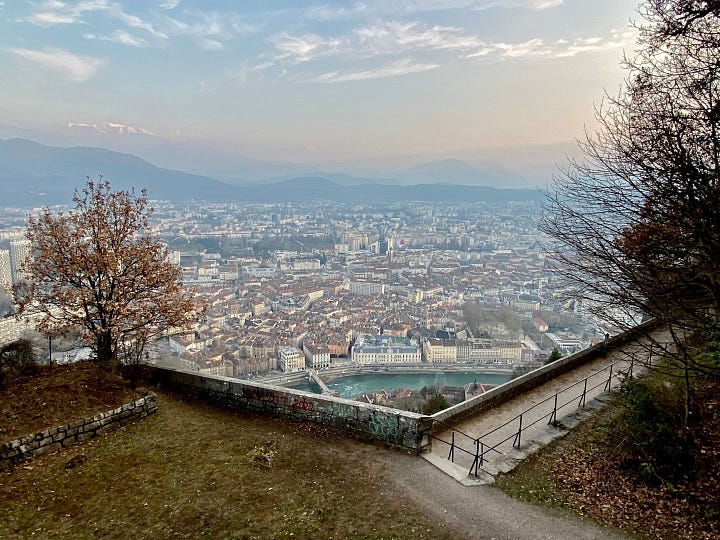

In my first post about Grenoble itself, a month into my first year, I described the fizz of novelty that accompanies mapping out a new home in a new country. I also noted the onset of routine, its dampening effect on wonder already noticeable then. Writing was to be the antidote, a practice for “keeping my senses fresh to the novelty of both the spectacular and the everyday.”
Routine, habit, and familiarity have indeed been a force to reckon with. As much as I love to explore, I’m also, somehow, quite a homebody. Lately I’ve taken to setting goals to get myself out of the house and away from my beaten path, to wander in the vieille ville and discover unfamiliar streets and shops and corners, before the next year unravels and I find I still don’t know my city well enough. When there’s initiative or companions to be had, I do, of course, go farther afield.
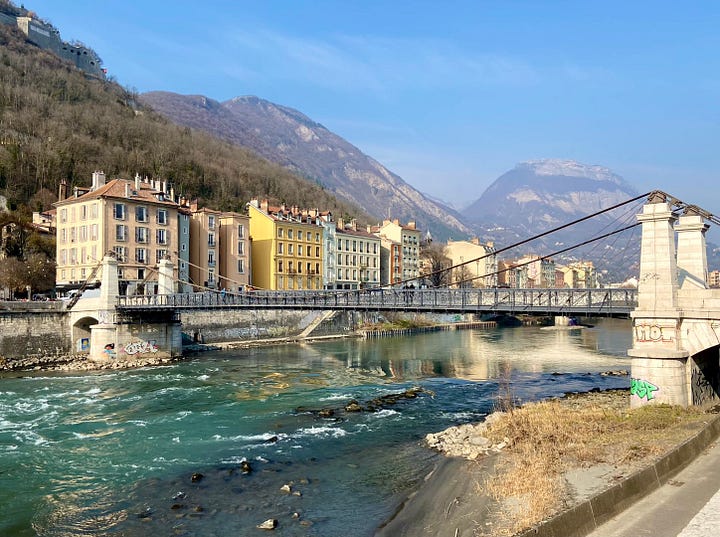

How has my writing contributed to these efforts over the last year?
Well, in actual fact, the painstaking hours of writing Substack posts (or procrastinating said writing) are often to blame for my reclusiveness in my free time. It’s amazing how difficult it can be to balance time living and time writing when you also have a full-time job. But this time spent researching and reliving the places I visit, threading together stories about them, has made an effervescing synergy between place, words, images, and audience that I’ve found rather addictive.
Take, for example, the saga of Grenoble’s street art. Vivid, towering fresques and scrawling graffiti were two of the first things I noticed about Grenoble, sparking a months-long easter egg hunt that grew into a tangled story to be deciphered. I tracked down books about graffiti, went on a guided tour, followed other street art Substacks. By December, I finally felt like my eye had sharpened enough to write about it. (The story is inevitably still unfolding; just this weekend I spotted revisions being made to a wall I had written about.)
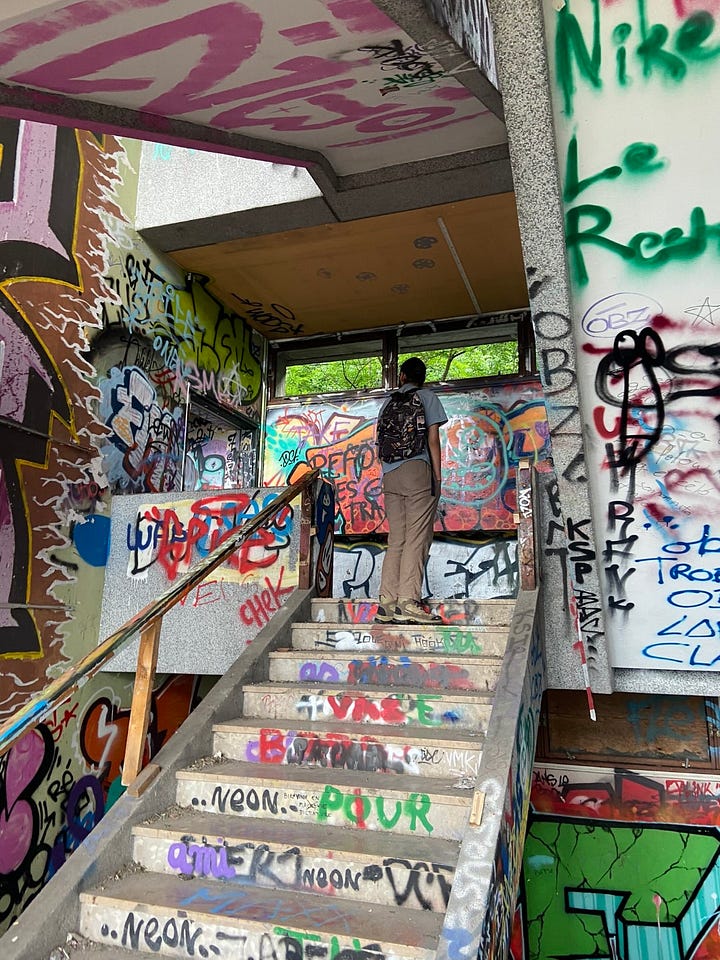
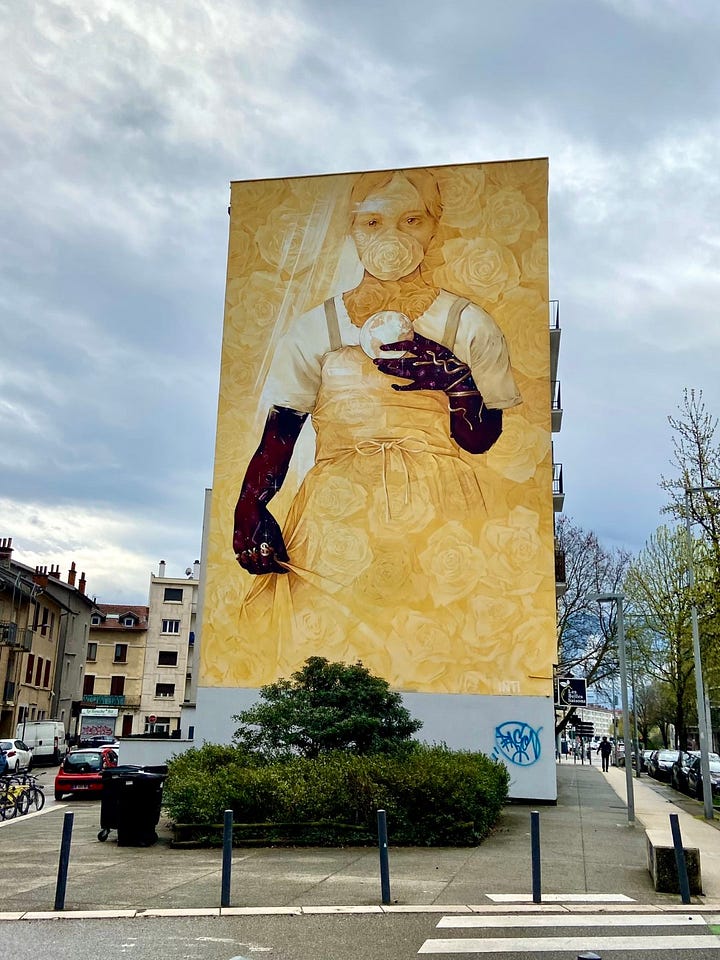
In writing, local haunts have gained dimensions I never would have known existed.
A spur-of-the-moment visit to an atmospheric local bookshop, Librarie des Alpes, was charming on its own, but it was only in writing about it that I learned about the father-writer-bookseller-community pillar who loved mountains and books with all his soul, whose passion project fell to his sons after his death in those mountains.
Not long ago, I was drawn to a 17th-century abbey by an art exhibit about trees hosted in its cloisters. Later, writing about it peeled back the layers of transformations the abbey has undergone since the Counter-Reformation (culminating in comic book publishing house), and simultaneously spun a tale of trees rooting in our lives and psyches. On a mid-writing reconnaissance visit to the abbey, I crossed paths with some hauntingly graceful urban trees in a tucked-away courtyard I had never seen before.
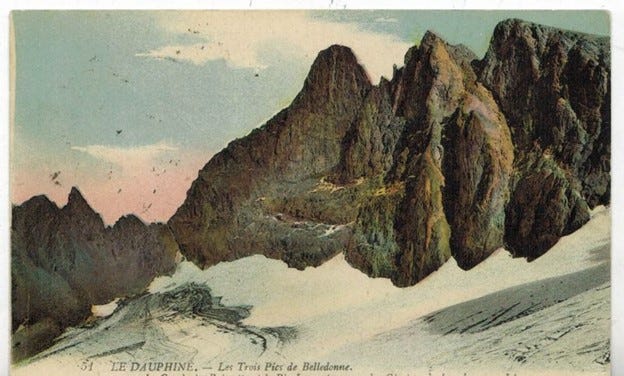
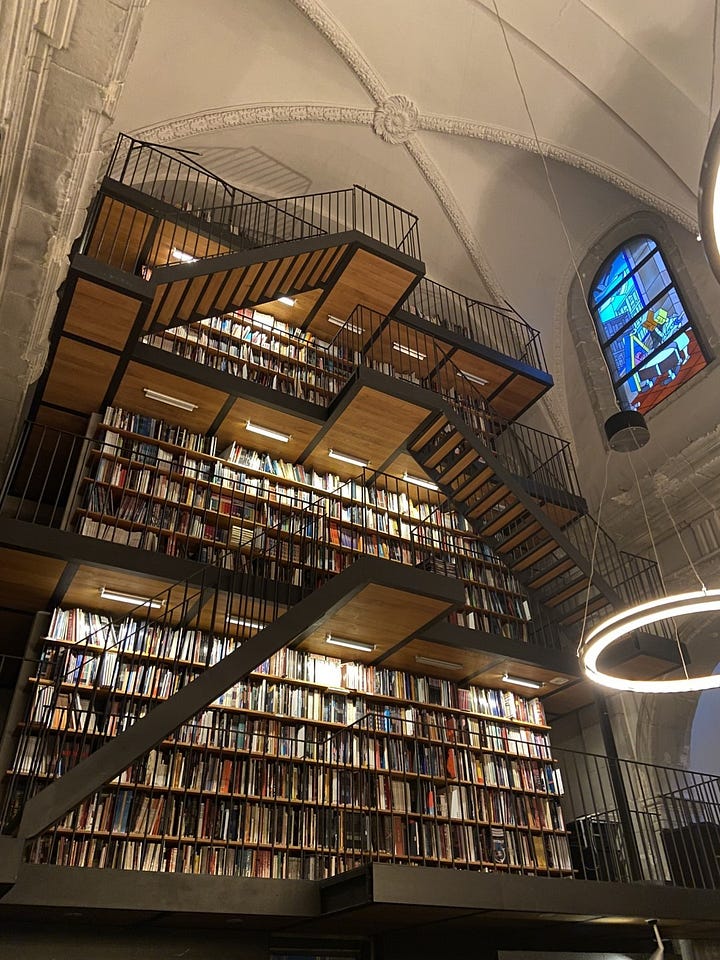
Months after my first visit to the Jardin du Lautaret, an alpine botanical garden and research station where I spent my very first week of work on a snowbound lab retreat, I set out to weave its story with that of an iconic nearby glacier. I learned the storied past of the garden and its people, and about the crumbling rock around the glacier that will, all too soon, disappear from the garden’s sweeping view across the pass.



In some cases, an idea for a post has pied-pipered me directly off the beaten path. This was the case when I set out to explore the collection of 1870s military forts quietly ringing Grenoble, and discovered that some of them were quietly decaying. I never would have set foot in the abandoned Fort des Quatre Seigneurs if not for my rabbit hole of research about its explosive, murky past (French Resistance plot, nuclear science lab, the works), or my imperative to do some experiential research. I was more haunted by ghosts in the writing than in the dark belly of the place itself.
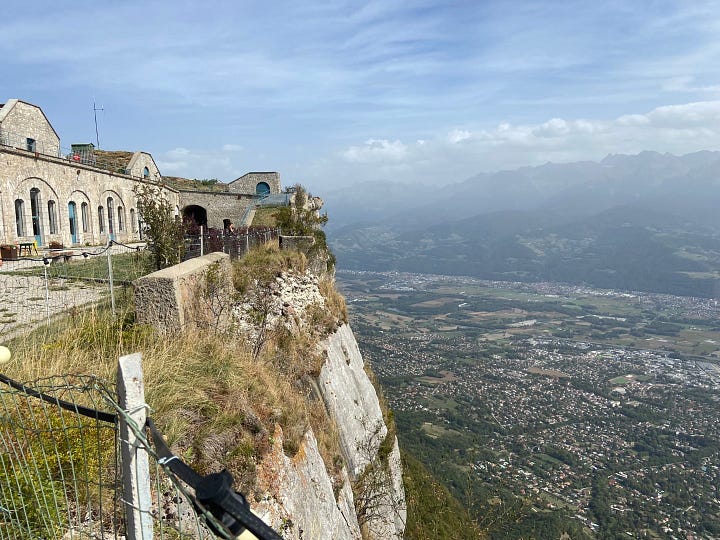

Essays set on the slopes around me have brought into focus the gradients of human, animal, and plant life interleaving in these long-inhabited mountains and collines. A hike to an iconic oak tree became more about the ancient villages and barley fields we passed through than the tree itself. An alpine field trip for setting up biodiversity monitoring plots along elevational gradients became a musing on what it means to measure these places. An autumn field trip to Lautaret became a meditation on mountain gradations of colors and creatures.

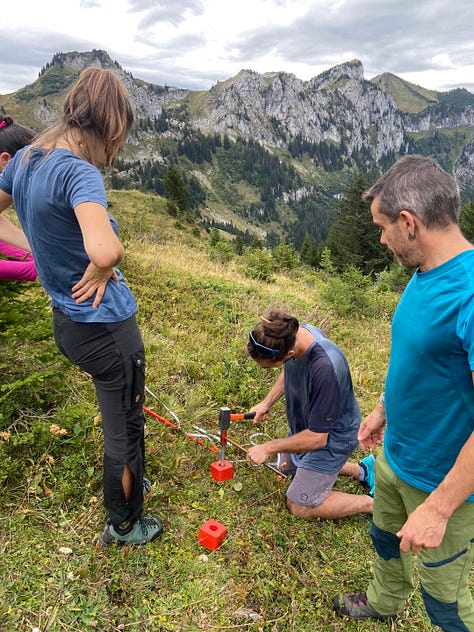

My one and only ski trip so far became an elaborate, and resonant to this day, metaphor for learning French. Which, by the way, is going better than learning to ski (admittedly a low bar2), but progress is far from linear. I still find myself contemplating the steep slope of a French conversation beneath my proverbial skis and hesitating about whether to push off.
Some stories are simply fun to tell, like when we risked our lives sleeping through a lightning storm on a lush plateau of glacial lakes.
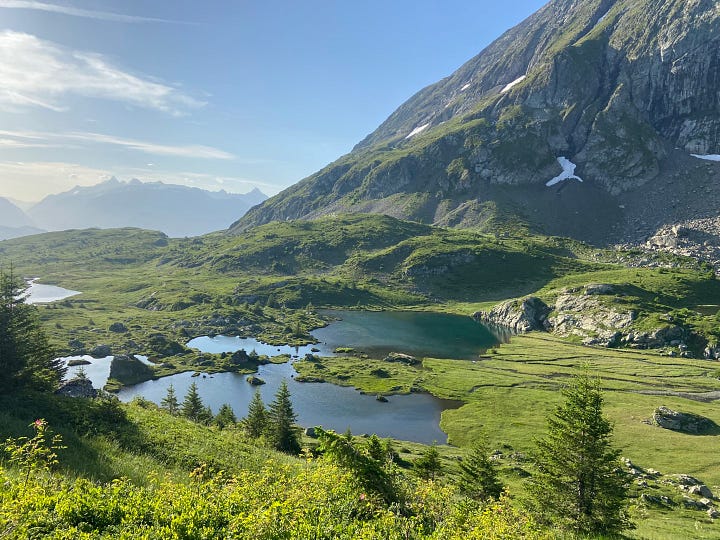

While my science has been threaded through Anne of Green Places from its inception (see the fieldwork posts mentioned above, or these poems), I’ve long wanted to crystallize the ideas I work with and cherish into their own stories, rendered with my signature lyrical touch and rooted in history. I finally began to do this in earnest recently, with heartening success.
I wrote an epic summary of plant diversity in the Alps that doubled, for me personally, as a context-gathering expedition for my research about the potential responses of alpine biodiversity to global change. It was stunning how much this invigorated my literature review. Must do more of this.
This was followed by a dizzying tale of the Tree of Life—not directly arising from my current research, but relevant to all of biology, and a personal favorite—and it has been my most popular post yet.


And of course, there is my Detail Diary. This daily writing practice made a formal habit of my already habitual mode of noticing the leaves and birds and clouds in my path. More than anything else, these posts have embodied the alchemy of everyday perception and wordcraft that I quest after. I love the gentle rhythm of following seasonal signs, and the taste of the words left on my tongue long after the blossoms have drifted away.


My Detail Diary also brings me to a point that’s only been implied so far: my audience. Although Anne of Green Places is a year old today, this is also a roughly 6-month anniversary of the second phase of Anne of Green Places. For the first 6 months, my audience was a steady circle of family and friends, most of whom quietly received my emails and, hopefully, enjoyed them in solitude.
Then, wanting to find a wider audience, I plugged into the full-blown Substack network. I started posting the Detail Diary on the Substack Notes platform around then (to an audience of approximately 0, give or take fellow then-newcomer
, and soon fellow Alps-dweller ). Within weeks, I began to find my people, those who resonated with these snippets and found my longer posts, and whose writing and art buoy my own.My audience has grown steadily since then3, and the resonances and connections have continued to multiply. More than any other writerly undertaking I’ve pursued4, Anne of Green Places has confirmed and snowballed my vision of myself as a public writer.
But even before I found such a bounty of reciprocity from the Substack community, my quieter audience spurred me. Maybe it’s deeper than that: the storytelling spurs me, regardless of the size of my audience.
Sometimes I cycle along the river Isère, looking at the Chartreuse massif, and feel about ready to burst with all the story potential stored behind those cliffs. The wandering monks and their liquor, the alpages and their sheep, the silent forts, the stone-folding uplift, the wild garlic.
I want to distill these into wordbound images I can give to you like pebbles to turn in your hands. I want to make visible all the electric zings waiting to jump between narrative joinings of time and place: building, pasture, person, plant.
I want to tell you a story.
So thank you, from the bottom of my heart, for listening.

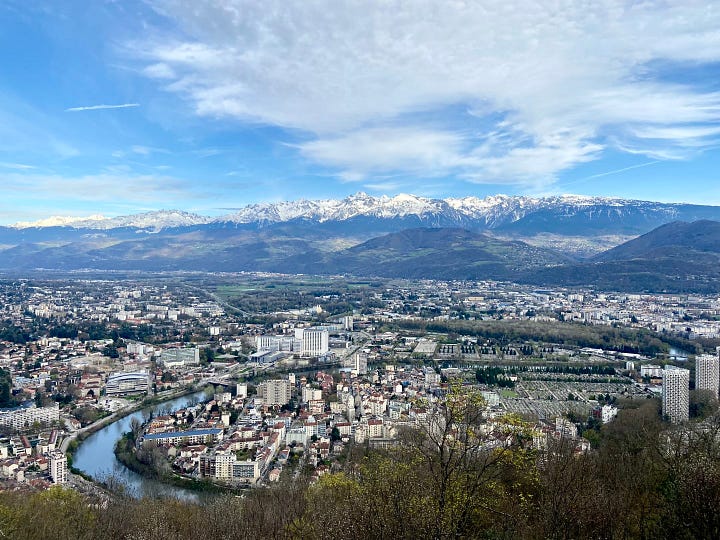
I have so many ideas, and I’m going to work darn hard to keep up this momentum and rapport with you all. Here are some of the ideas on the stack:
Place/historical essays
The Grande Chartreuse Monastery: the monks, the silence, the liquor
The Jean-Jacques Rousseau house : his formative years in Chambéry, the merits of the countryside
The composers of the French Alps: Messiaen and Berlioz
The literature of the Alps
The House of Lumière, Lyon: the birthplace of cinema
More bookshops and hikes and what have you
Ecology
Profiles on plant families found in the Alps
The many definitions of biodiversity
How traditional land use in the Alps affects plant diversity
The legacy of glaciation in the Alps
The evolution of plant life history (find out what the heck “alternation of generations” means)
Darwin’s abominable mystery: why are there so many angiosperms? (plus an alpine ecologist’s contribution)
Local nature
A new Urban Tree Diary: profiles of neighborhood trees with character
starting with this long-limbed beech:
A collaboration with
: mapping my neighborhood as a hunter-gatherer ancestor would see it
Other collaborations
An upcoming crosspost from my Cambridge days for
Monthly contributions to My French Life magazine with
I could go on…so stay tuned!
P.S. If you didn’t already notice (or only receive emails), in honor of the anniversary of Anne of Green Places, I finally got out my watercolors and created an actual logo for the page. Here it is:
Two data points aren’t much, but it sure seems warmer and earlier this year. I’m already afraid for the summer heat.
Despite my determination to pick up again on what I learned on my first ski trip at the end of last season, I didn’t set foot on a ski slope this winter. I just haven’t found the motivation to organize lessons or find people at the same level who won’t drag me to a slope I’m not ready for. I have a few other excuses but none of them are particularly good, given where I am. Oh well. I still have at least one more winter here…
I don’t feel much need to talk about numbers, but if you’re curious, roughly 75 friends and family kindly piled on at the start, and remained a plateau until I engaged with Substack as a network. Since then, just in the last few days in fact, my subscriber count reached 400 (then 398, then 400 again). My dearest hope is that growth means a higher chance of finding readers who really want to be here. Even if the number doesn’t mean much, knowing that some portion of it represents people savoring my stories, and even getting to hear from some of them, means everything.
I thoroughly considered myself a poet before starting this enterprise, and also had a previous blog, The Cambridge Placebook, that I felt similarly passionate about. But I hadn’t sought to publish my poetry very widely (mostly due to lack of organization), and The Cambridge Placebook, as a standalone website, felt much more anonymous. While more people do seem to stumble on that blog via Google than they do this one, only Substack has created new, sustained relationships with my readers.

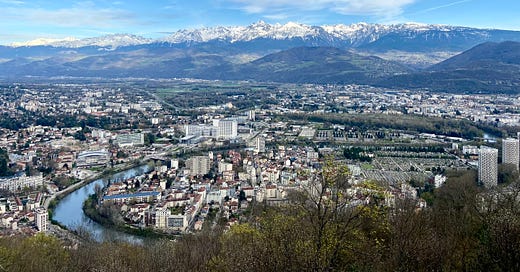



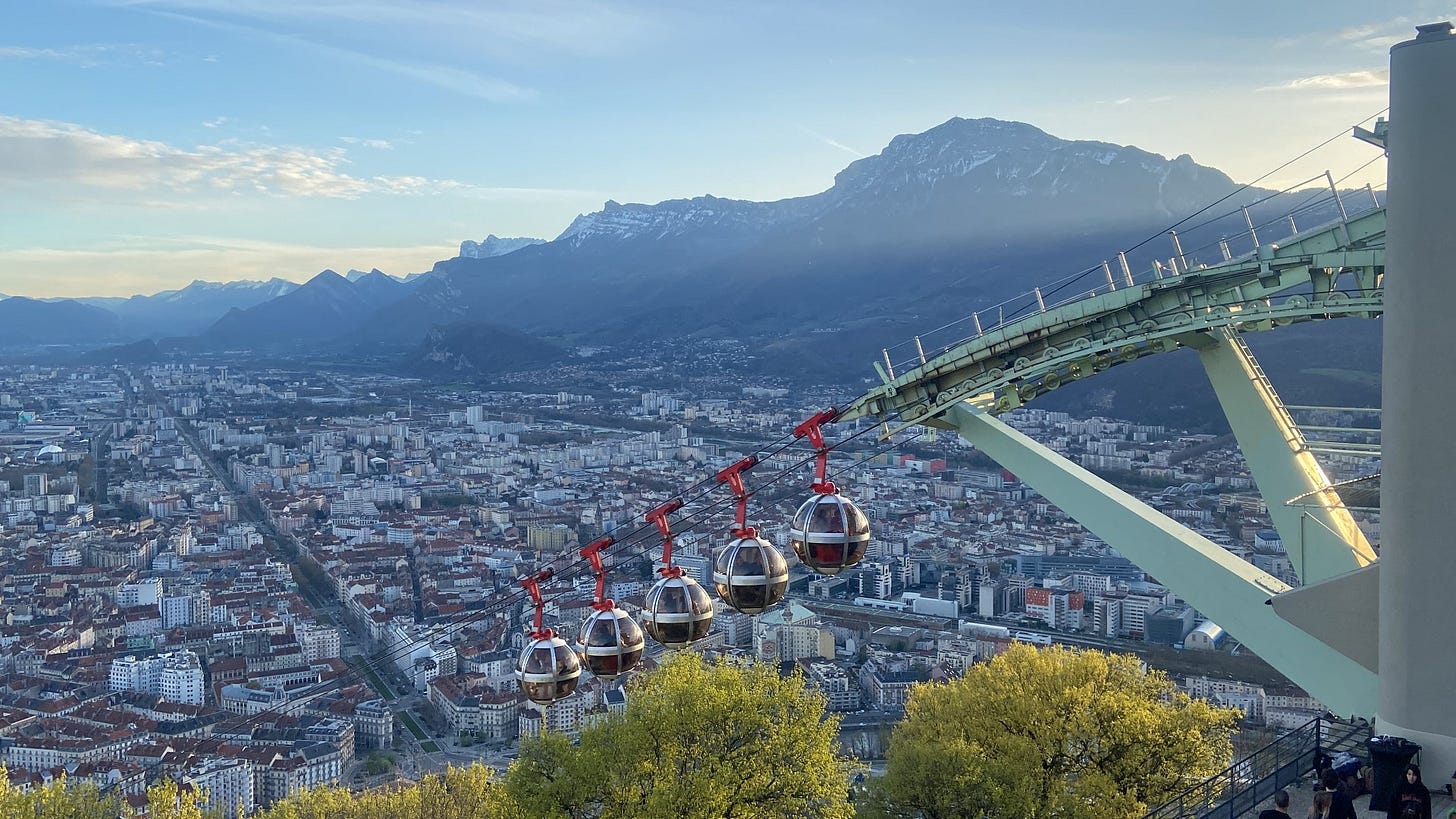










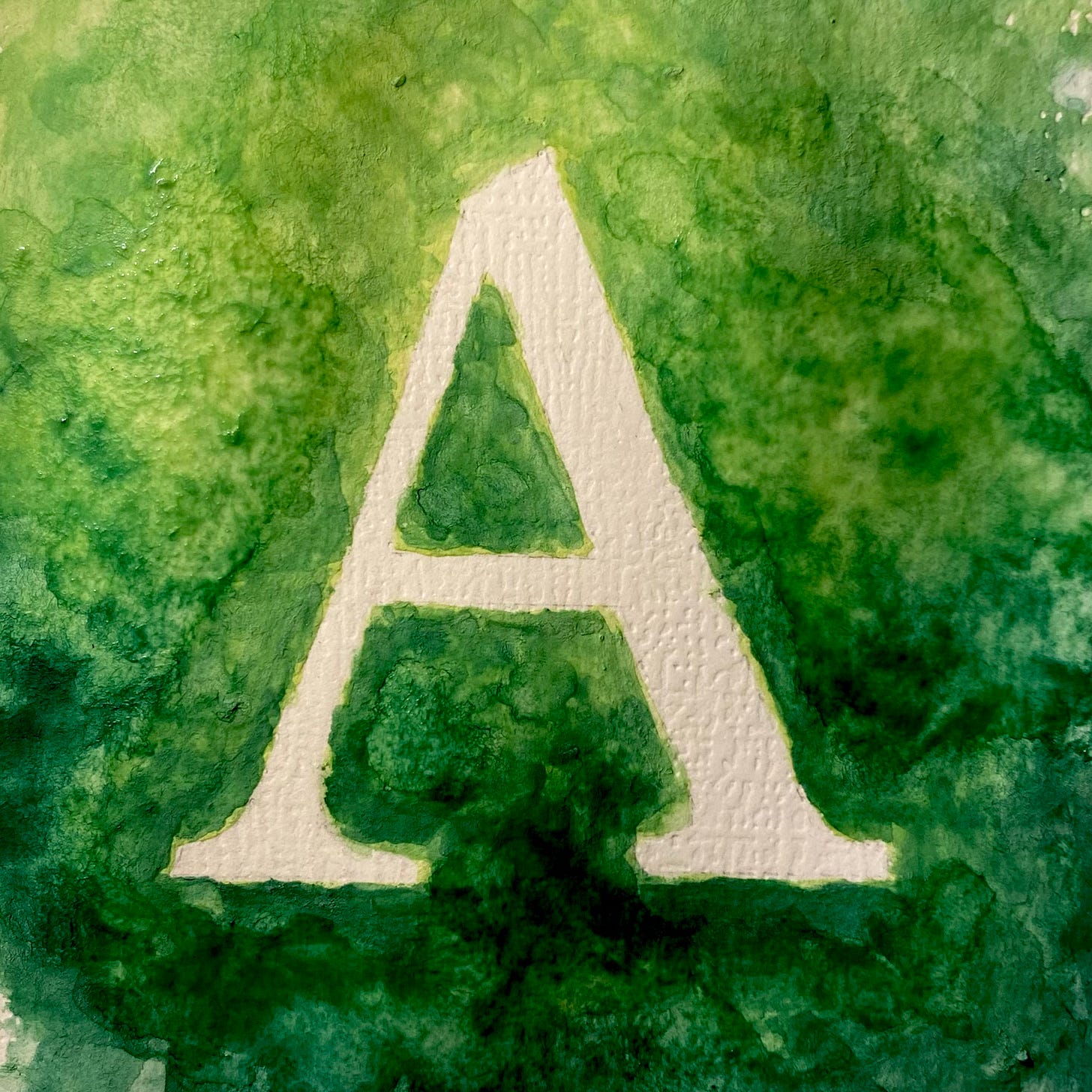
This post is a great way Into your writing and background!
I have just found your posts and they are so interesting and absorbing! I will return to dip in as I find your flow fascinating thank you.